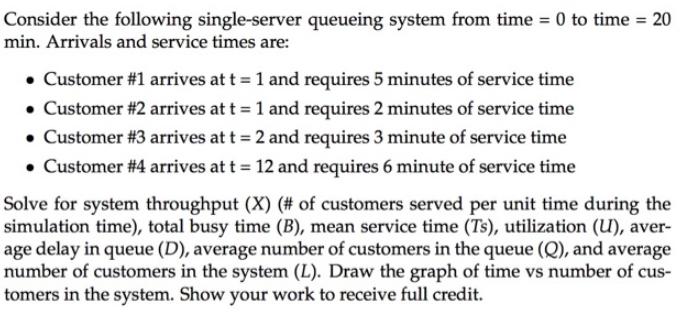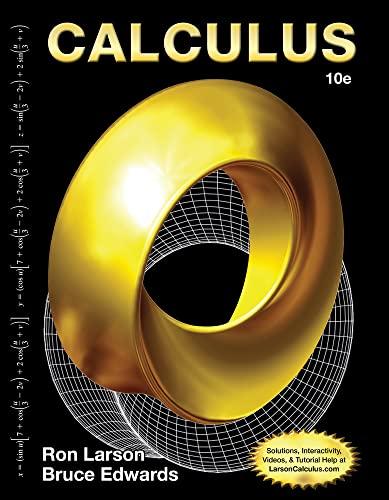Answered step by step
Verified Expert Solution
Question
1 Approved Answer
Consider the following single-server queueing system from time = 0 to time = 20 min. Arrivals and service times are: Customer #1 arrives at

Consider the following single-server queueing system from time = 0 to time = 20 min. Arrivals and service times are: Customer #1 arrives at t = 1 and requires 5 minutes of service time Customer #2 arrives at t = 1 and requires 2 minutes of service time Customer #3 arrives at t = 2 and requires 3 minute of service time Customer #4 arrives at t = 12 and requires 6 minute of service time Solve for system throughput (X) (# of customers served per unit time during the simulation time), total busy time (B), mean service time (Ts), utilization (U), aver- age delay in queue (D), average number of customers in the queue (Q), and average number of customers in the system (L). Draw the graph of time vs number of cus- tomers in the system. Show your work to receive full credit.
Step by Step Solution
★★★★★
3.38 Rating (164 Votes )
There are 3 Steps involved in it
Step: 1

Get Instant Access to Expert-Tailored Solutions
See step-by-step solutions with expert insights and AI powered tools for academic success
Step: 2

Step: 3

Ace Your Homework with AI
Get the answers you need in no time with our AI-driven, step-by-step assistance
Get Started


